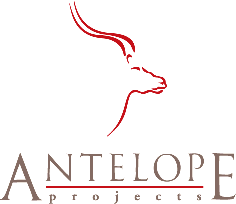Description
In July 2001, I visited the Roman Wall in Northumberland. Or rather I tried
to visit it; access was restricted because of the foot and mouth disease
(FMD) epidemic.
Most of the wall and the special sites along it are owned by the National
Trust, which would normally expect several hundred thousand visitors in
a year. There are many other tourist related businesses that serve this
visitor population. The closure of the wall and the sites reduced visitor
numbers drastically.
The wall and the sites are situated in farmland largely given over to
grazing by sheep and cattle. It was this proximity of visitors and livestock
that required the sites to be closed to avoid spreading the disease. The
farmers who own the land and the livestock were all in a precarious financial
position, needing either compensation for their animals or a speedy end
to the movement restrictions. In the end, most of them got neither; and
as I write, restrictions have only just been lifted.
I was told by an employee of the National Trust, who was also the wife
of a local farmer, that the National Trust had investigated a plan to cull
all the livestock along the wall and for a safe distance either side, so
that the wall could be opened to tourists. A case could be made that the
income to the local economy from the tourists was larger than that from
the livestock on the farms. The general reaction from the farm community
to this plan was one of outrage.
Questions / Issues to Consider
Stakeholders
Think about the National Trust, other local businesses, local farms, visitors
and would-be visitors, MAFF (as it then was) and the local Tourist Board.
-
What sorts of value are they looking to create?
-
What do they depend on to create this value?
-
What is the value impact of the FMD outbreak?
-
What is the potential value impact of the National Trust plan?
Measurement
Think about what can be measured in this scenario, and what could be learnt
from those measures.
-
What information is needed to assess the National Trust plan?
-
What sorts of uncertainty are the measurements subject to?
-
Who is in a position to measure each suggested quantity?
-
Is it in their interest to share the information?
Outcomes
If the plan had been put into operation, there is more that one outcome
that could have resulted. Think of what might have happened.
-
What potential scenarios could have resulted from the plan?
-
How is cost and value distributed among the stakeholders in these scenarios?
-
What would you need to have known/measured in order to predict which scenario
came about?
Ethics
The plan, if carried out would clearly have upset some people. Think about
the ethics of the National Trust putting forward such a plan.
-
How could the plan be justified ethically?
-
Who might take a different ethical position?
-
How might ethical differences be resolved?
Source
Prepared by Aidan Ward. January 2002.

 |
 |
| [top]
[student page]
[contact us] |
This page last updated on January 21st, 2002
Copyright © 2002 Veryard Projects Ltd & Antelope
Projects Ltd
http://www.veryard.com/orgmgt/casehadrian.htm
|

